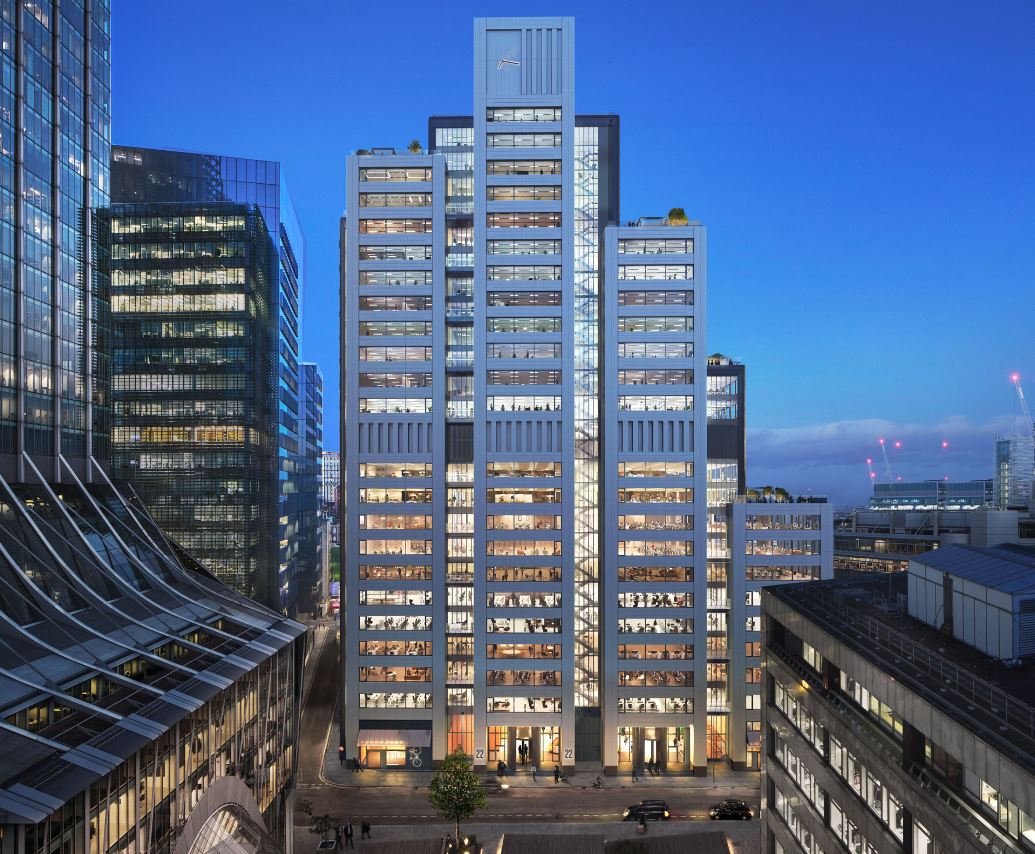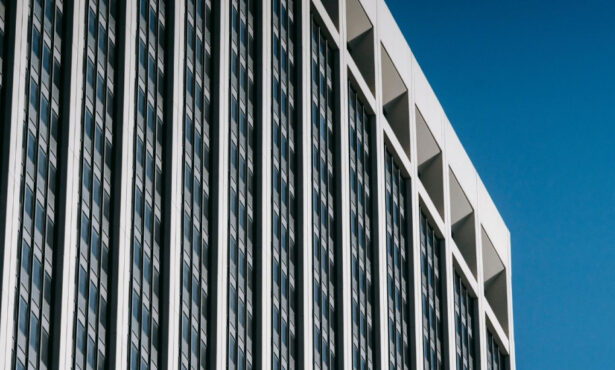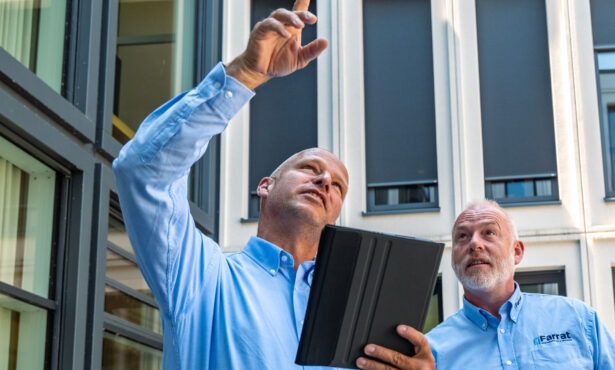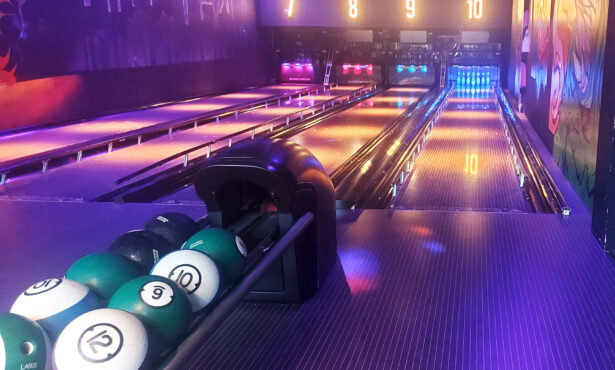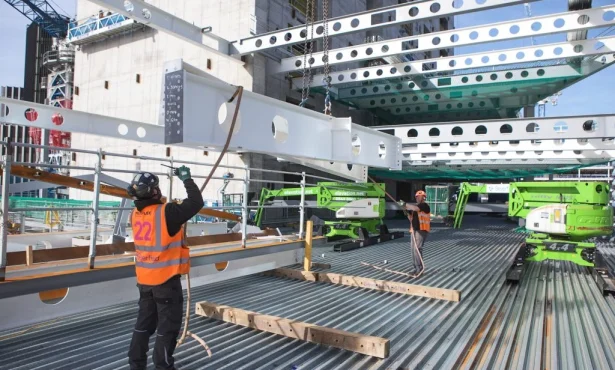22 Ropemaker is set to be a brand-new comprehensive development in London, made up of over 420,000 sq ft spread over 27 stories. Within close proximity to several of the key London Underground stations, this commercial building has been designed with well-connected and forward-thinking businesses in mind. As a result of this, sustainability and energy efficiency are driving factors in material-specifying decisions
The challenge
The rise in energy costs across the UK means that energy efficiency is a growing and more pressing consideration for businesses looking for new premises.
In addition to the cost of gas and electricity bills, energy efficiency is important to businesses looking to ensure they are minimising their carbon footprint wherever possible and to be able to demonstrate that.
The number of outside spaces including balconies and roof terraces, as well as the creative use of façades in the classic design of this building, meant that to maximise energy efficiency without compromising on structural integrity Structural Thermal Breaks would need to be used across the entirety of the façade at multiple structural connection scenarios
Another key challenge in any high-rise building development is fire safety. Since the Grenfell disaster where 72 people died and another 70 people were injured when a 24-story block of flats burnt down, the use of fire-safe materials has been at the front of both residents’ and developers’ minds – especially in high-rise buildings – as has the new legislations being rolled out across England and Wales.
Challenge our engineers to ensure the efficiency and safety of your projects. Email us or call +44 161 924 1600 to talk to the team.
The recently enacted Building Safety Act 2022 has been created to address an identified lack of oversight, as well as to clarify the roles and responsibilities within the construction and maintenance of ‘high-risk development’ (buildings that are at least eighteen metres tall or at least seven floors, containing two or more dwellings.)
The level of accountability and scrutiny that this act drives further increases the focus on and demand for fire-resistant materials wherever possible.
The solution
Farrat TBF was the fire-rated structural thermal break material selected by façade specialists Josef Gartner GmbH to prevent heat transfer through beams where the external building aspects meet the interior.
Farrat TBF is an A2,s1,d0 rated non-combustible structural thermal break material that can maintain optimal structural performance at temperatures at 550°C and maintain integrity beyond 1000°C In addition to being the leading fire-rated thermal break solutions; exceeding all current fire regulatory requirements for buildings above (and below) 18m, Farrat TBF also provides high-level thermal performance to solve structural thermal bridge issues.
The outcome
High-rise building design that takes into account both energy efficiency and fire safety is set to be the norm in cities around the world, but is especially poignant in London,
states Chris Lister, Commercial Manager of Structural Thermal Breaks at Farrat.
To see Farrat TBF being used in a building designed to ensure the comfort and safety of those occupying it as well as such as a strong focus on wellbeing with the use of outside space is hugely rewarding.
Fire-rated thermal break materials with Farrat
Farrat’s Structural Thermal Breaks are an essential component for energy-efficient buildings. If you would like to learn more about the integration of thermal breaks in structural connections, contact our Structural Thermal Break team by email, call us on 0161 924 1600 or fill in the contact us here.

